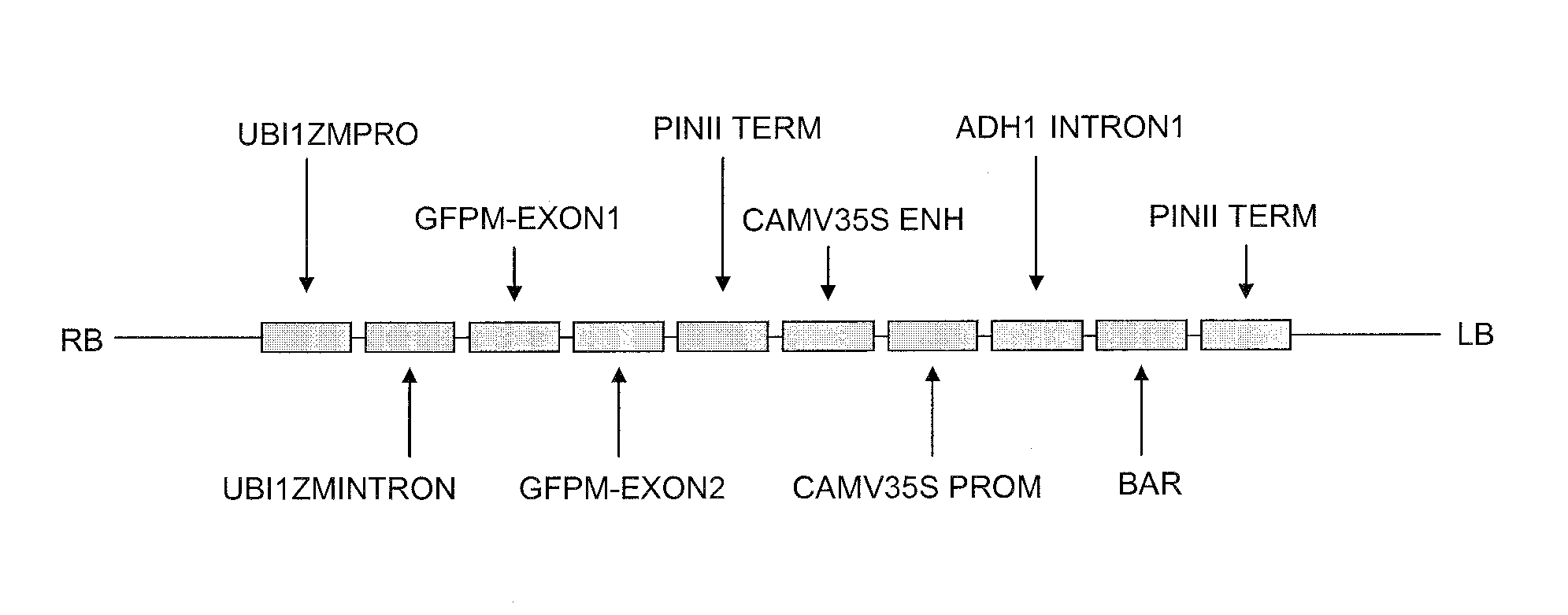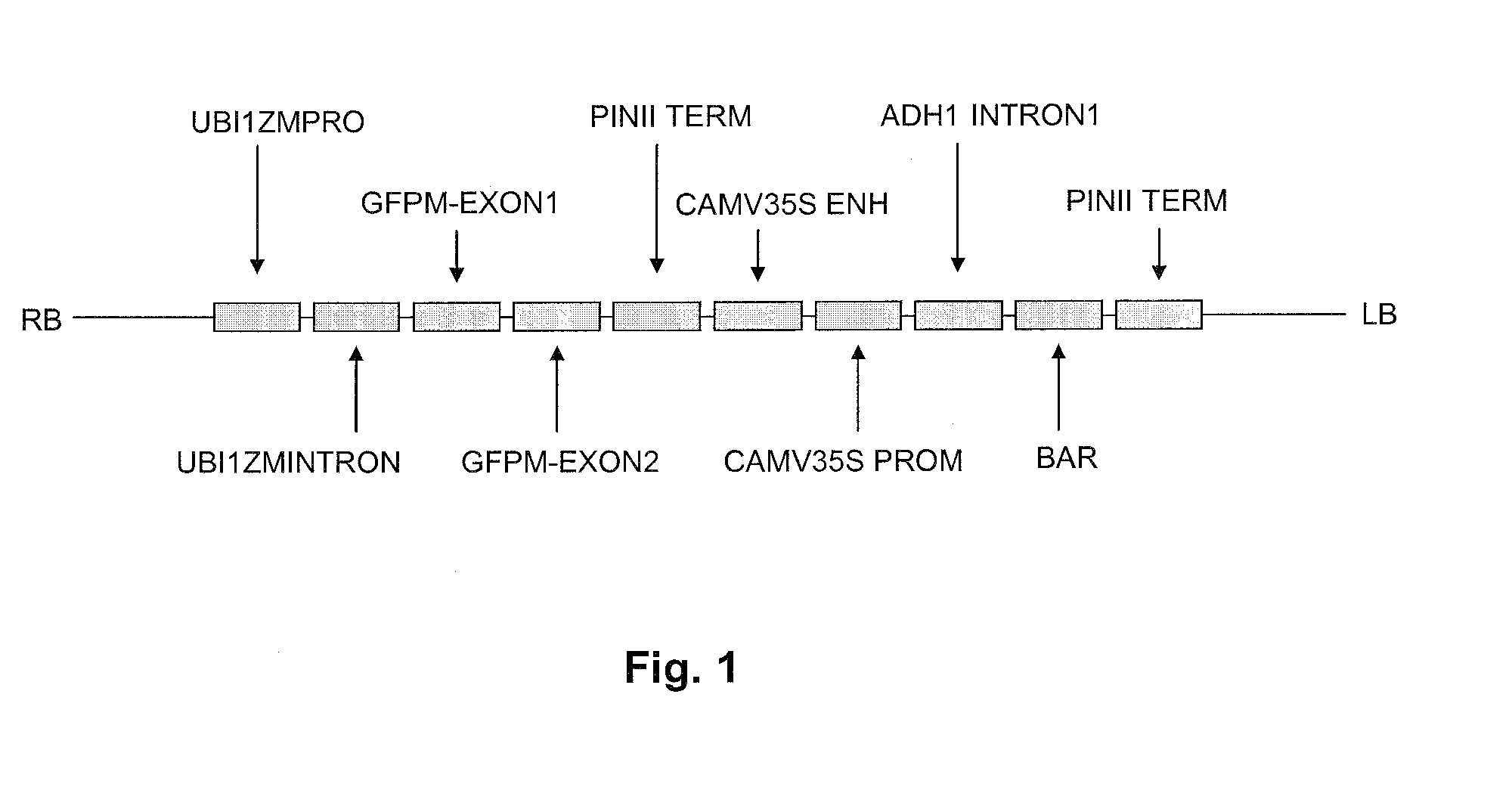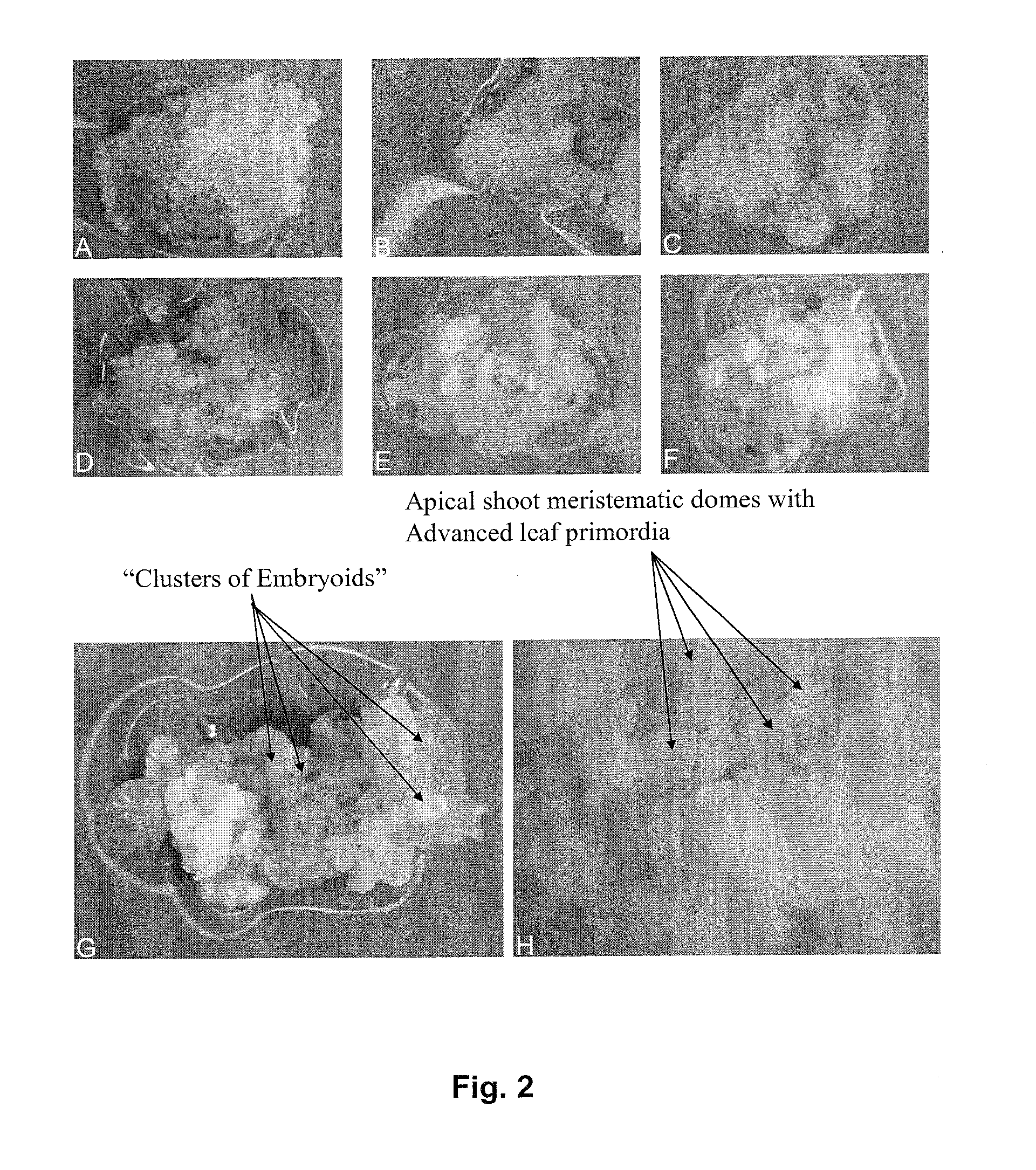Production of progenitor cereal cells
- Summary
- Abstract
- Description
- Claims
- Application Information
AI Technical Summary
Benefits of technology
Problems solved by technology
Method used
Image
Examples
examples
Plant Materials and Media Compositions
[0050]The sorghum public line, P898012 (originally supplied to Pioneer Hi-Bred International-USA by Dr. John Axtell, Purdue University; see Zhao et al., 2000) and the maize genotype denoted GS3 (developed by Pioneer Hi-Bred International-USA) were used for the isolation of immature zygotic embryos at 9-14 days after pollination. The two genotypes were grown in Pioneer Greenhouses primarily as described (Zhao et al., 2000). Sterilization of sorghum panicles and corn ears was carried out with 50% Chlorox Bleech (3.075% (v / v) sodium hypochlorite) and 0.1% (v / v) Tween 20 for 20 minutes and then rinsed three times with sterile distilled water. This sterilization procedure was repeated with 10% Chlorox bleech (0.615% (v / v) sodium hypochlorite). Immature zygotic embryos ranging in size from 0.8 mm-1.8 mm were isolated and treated as indicated in the transformation procedures outlined below. The compositions of various media used in this study are outli...
PUM
| Property | Measurement | Unit |
|---|---|---|
| Fraction | aaaaa | aaaaa |
| Fraction | aaaaa | aaaaa |
| Fraction | aaaaa | aaaaa |
Abstract
Description
Claims
Application Information
 Login to View More
Login to View More - R&D
- Intellectual Property
- Life Sciences
- Materials
- Tech Scout
- Unparalleled Data Quality
- Higher Quality Content
- 60% Fewer Hallucinations
Browse by: Latest US Patents, China's latest patents, Technical Efficacy Thesaurus, Application Domain, Technology Topic, Popular Technical Reports.
© 2025 PatSnap. All rights reserved.Legal|Privacy policy|Modern Slavery Act Transparency Statement|Sitemap|About US| Contact US: help@patsnap.com



